Aadigyan - Social Sustainability Programme
Don’t you ever feel like giving back to the community? Focusing your time and effort on the well-being of the unprivileged? Well, it’s high time you plan your volunteering trip to India! This country has a lot to offer in terms of ethical volunteering. Volunteer in India and help the localities bring sustainability into their life. Right from teaching foundations of English and Maths to children & women. Teaching the business models to the local artisans, there is a lot to be done in helping these people become self-reliant through the Social Sustainability Programme
Immersion programmes are open to teams/groups led by faculty, institutions heads, etc, as well as individuals
Faculty-Led Exploration
SRM - AP enables faculty-led exploration by inviting the professors/heads to participate along with their students in exploring the rich Indian cultural heritage through Aadigyan - Summer Immersion Programme. The faculty-led programme lets you connect with your students for hands-on experiential learning in this non-classroom cultural immersion programme. The thoughtfully planned visit to the ancient form of toy-making at Kondapalli will stimulate the entrepreneurial spirit among your students.
Summer Immersion Programme
Social Sustainability Programme: 1 Week - (11th July to 17th July 2022); 2 Week - (11th July to 22nd July 2022)
Social Sustainability Programme Schedule: 1 Week
Social Sustainability Programme Schedule: 2 Week
Social Sustainability Programme
Rural Development Based on Social Sustainability Project Goals:
1. IMPROVING HUMAN DEVELOPMENT INDEX
Raising the living standards of the locals and ensuring inclusive growth for all.
2. MARKETING THE LOCAL MADE GOODS
Marketing Handloom products & Handmade Toys to the rest of the world through content and PR for business & cultural tourism.
3. WOMEN EMPOWERMENT
There is no tool more effective than the empowerment of women because when they participate in the economy, everyone benefits.
4. IMPROVING LOCAL CAPACITY
Carrying capacity defines the limits of cultural tourism growth but there is always space for improvement.
5. EDUCATION
Community-based education is an attempt to promote learning and better understanding using a range of formal and informal methods.
6. CREATION OF MICRO ENTERPRISES
Creating micro-level businesses is a small attempt to directly create job opportunities.
7. JOB CREATION
Opportunities don’t happen, they need to be created. Creating jobs can directly help them improve their conditions.
Duration of the Programme
1 Week - (11th July to 17th July 2022)
2 Weeks - (11th July to 22nd July 2022)
The Programme Fees
1 Week : 250 USD for International Students
2 Weeks: 500 USD for International Students
What’s included
- Pick up from Vijayawada Airport
- 24x7 support and backup
- Three meals per day
- Socio-Cultural Events
- Shared accommodation within the University Campus
- Transport to local Cultural Sight Seeing
- Dropping to Vijayawada Airport
What’s not included
- Personal Expenses
- Weekend Getaways
- International flights’ tickets
- Visa
- Travel Insurance
Who can Apply
The programme is open for International students & Professore/Mentoring Faculty
Anyone who completed Higher Secondary / +2 in any stream, Working knowledge in English
Apply by 21st May 2022 to get a 50% scholarship: The last date to Apply - 1st June 2022
How to apply
Apply through the link: https://forms.gle/2e2Dgb1MjMRKCd3G7
Apply through QR Code:

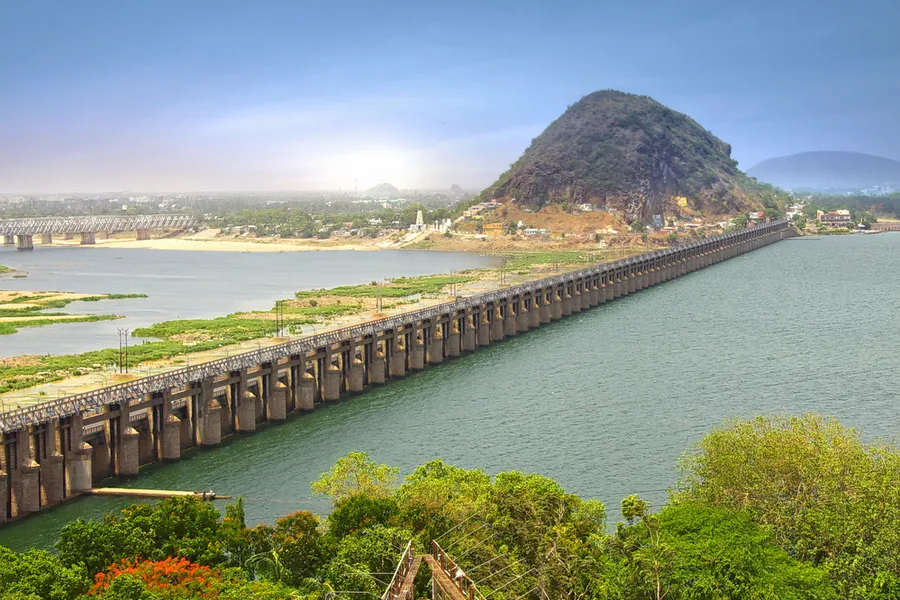
The Prakasam Barrage stretches 1223.5 m across the Krishna River, connecting Vijayawada, Krishna, and Mangalagiri Tadepalle Municipal Corporation, Guntur districts in Andhra Pradesh, India. The barrage also serves as a road bridge and spans over a lake. The three canals associated with the barrage run through the city of Vijayawada, crossing it and giving it a Venetian appearance.
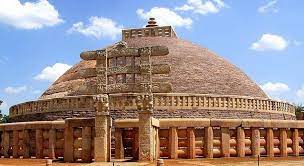
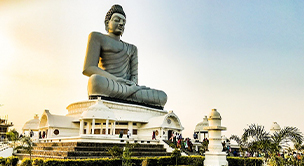
The Amarāvati Stupa, popularly known as the great stūpa at Amarāvathi, is a ruined Buddhist monument, probably built in phases between the third century BCE and about 250 CE in Amaravathi village, Guntur district, Andhra Pradesh, India. The site is under the protection of the Archaeological Survey of India. The campus includes the stūpa itself and the Archaeological Museum.
Kondapalli Fort, also locally known as Kondapalli Kota, lies to the west of Kondapalli in the Krishna District, near Vijayawada, the second largest city of Andhra Pradesh, India. This historical fort, also known as Kondapalli Quilla, was built by Prolaya Vema Reddy of the Reddi Kingdoms during the 14th century CE. Initially, it was built as a leisure place and business centre and later served as a military training base for the British rulers. According to some other historians, it was built in 1360 CE by Anna Vema Reddy after capturing Kondapalli from Mudigonda Chalukyas. The fort has been home to several dynasties, from the Reddi rulers to the Nizam Nawabs and then the East India Company.
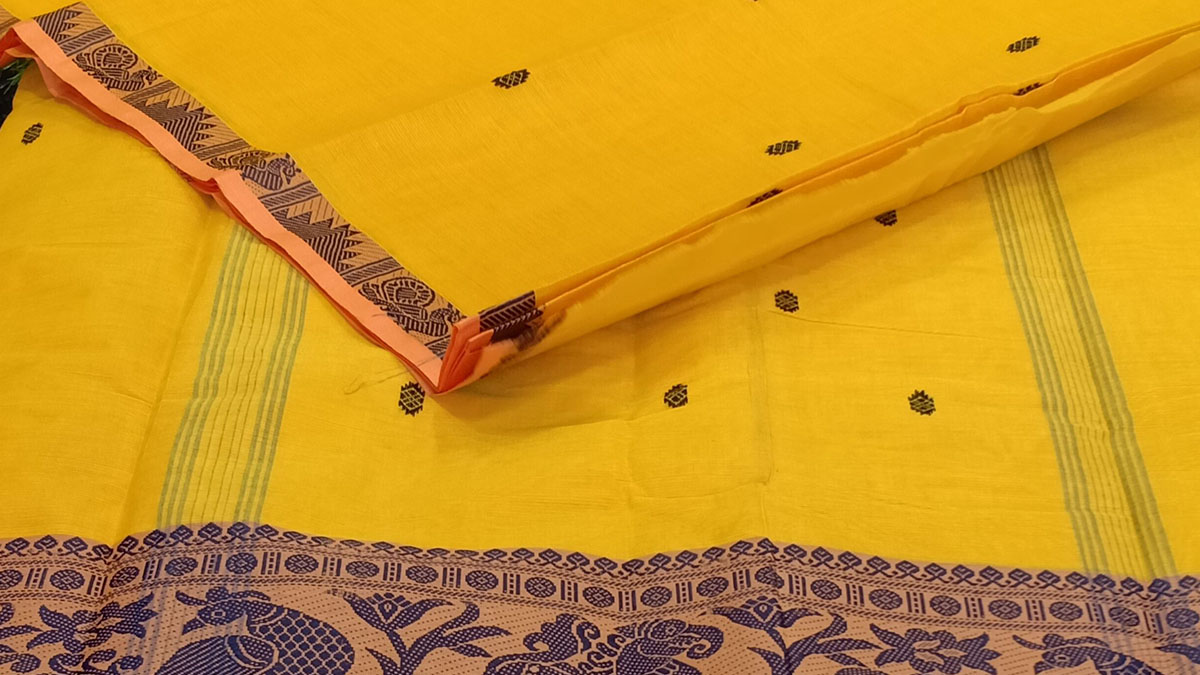
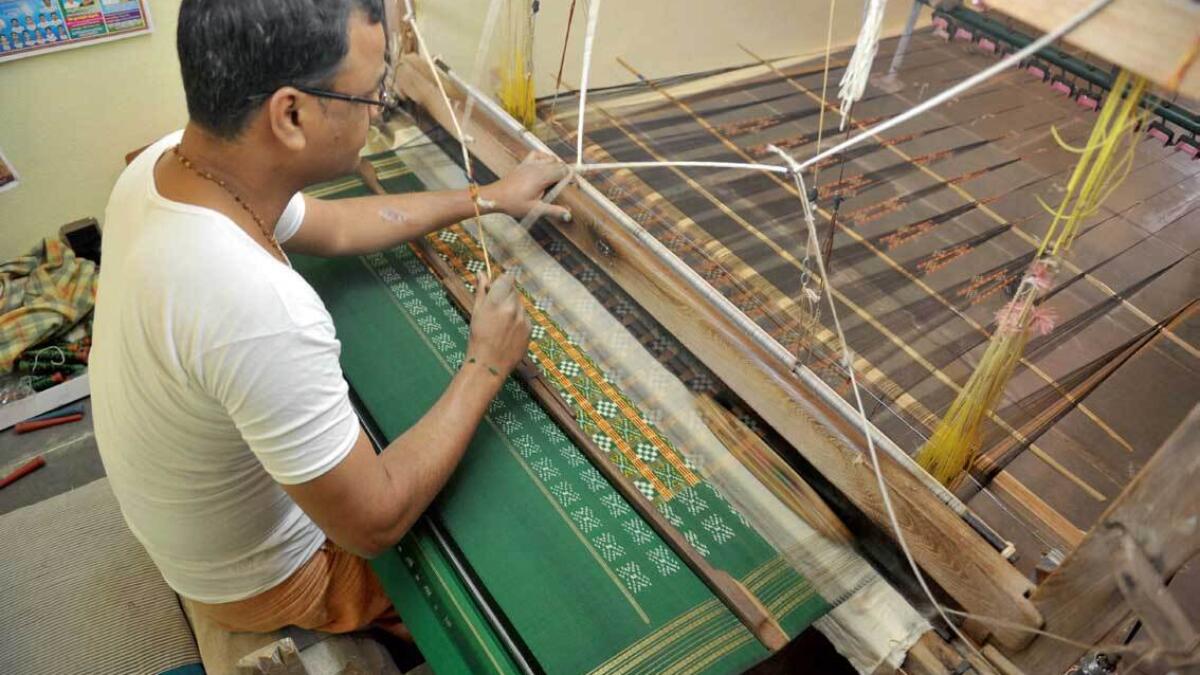
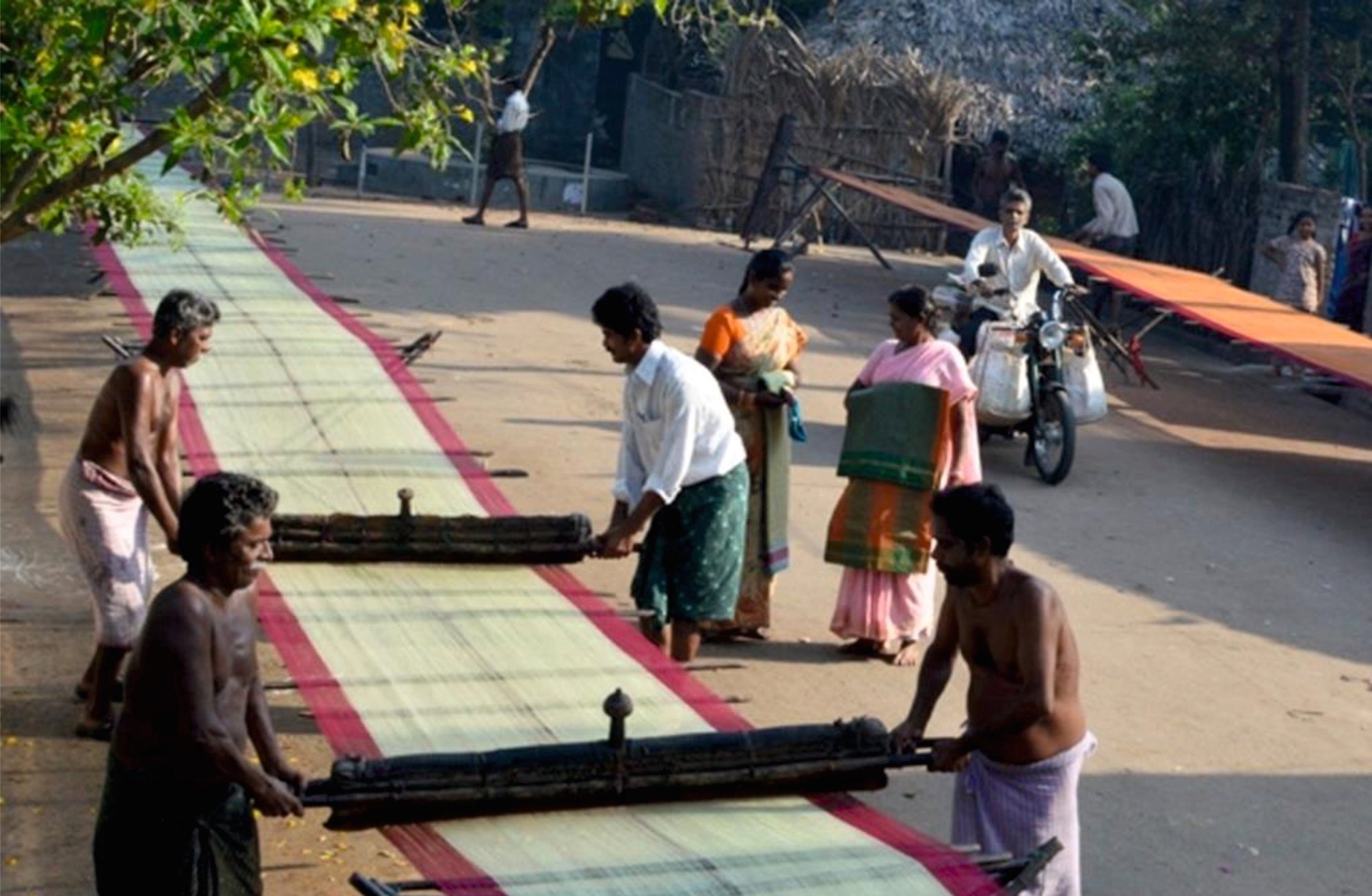
Managalagiri, the temple town, and pride of Andhra Pradesh, India, is generally known for its fine handloom sarees, mostly in cotton, cotton-silk, or mercerized cotton. There is a marked use of bright golden and sometimes inclusion of shining silvery grey zari. Being a town known for its temples, the auspicious temple design always figures someplace, most times along the saree's border.
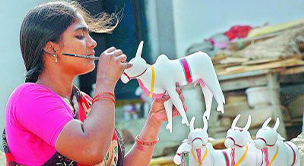

The Kondapalli toys are made from softwood known as Tella Poniki, found in nearby Kondapalli Hills. Each part is carved out separately. Then makku- a paste of tamarind seed powder & sawdust is used to join pieces together, add details and finish the toys. The latter step involves coloring with either oil and watercolors or vegetable dyes, and enamel paints are applied based on the type of the toys. The artisans mainly work on producing figures of mythology, animals, birds, bullock carts, rural life, etc. The most notable one is Dasavataram, dancing dolls, etc. The art of crafting is a 400-year-old tradition.
